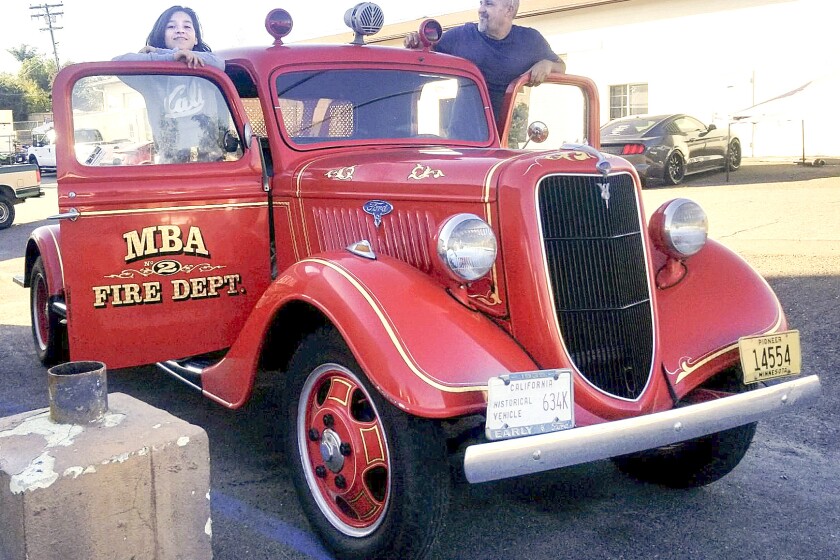Ultimate Overview to Acquiring Used Fire Trucks for Sale: What You Required to Know
The Benefits of Obtaining a Formerly Owned Fire Truck Versus Buying a Newly Manufactured Automobile for Firefighting Purposes
In the realm of fire solution purchase, the decision in between obtaining a formerly had fire vehicle or investing in a newly produced automobile holds considerable weight for firefighting divisions. While the appeal of a new apparatus is indisputable, there are compelling advantages to be considered when going with a pre-owned fire truck. From cost-effectiveness and immediate availability to modification possibility and lowered devaluation, the advantages of selecting a previously owned vehicle merit thoughtful factor to consider - used fire trucks for sale. As fire divisions browse the complexities of fleet management and source appropriation, the reasoning behind this decision-making process reveals a strategic technique that exceeds the surface.
Cost-Effectiveness
Is acquiring a previously possessed fire truck an economical solution for fire departments looking to upgrade their fleet successfully and within budget restrictions? In several cases, utilized fire vehicles are readily available at a fraction of the expense of a brand-new version, enabling fire departments to get essential equipment without surpassing monetary limitations.
Moreover, getting a previously owned fire engine can likewise cause reduced insurance policy premiums and decreased depreciation expenses. Given that brand-new vehicles generally experience a considerable devaluation in their preliminary years, choosing a made use of fire engine can mitigate this economic influence. Furthermore, repair and maintenance costs for older fire engine might be a lot more predictable and workable, adding to lasting cost-effectiveness for fire divisions aiming to make best use of functional performance while decreasing financial stress.
Immediate Availability

Additionally, the immediate availability of a previously had fire vehicle can add to maintaining seamless firefighting services without interruptions. In emergency situation situations where extra firefighting vehicles are needed without delay, having a pre-owned fire engine easily available can make sure that the fire division is well-appointed to react effectively. By bypassing the waiting time associated with getting a brand-new automobile, fire divisions can strengthen their firefighting capacities promptly and efficiently by acquiring a previously owned fire engine.
Established Performance Document

This established efficiency document can offer confidence to fire departments, as they can make even more informed choices based on the previous functional history of the automobile. When called upon in the future, knowing that a previously owned fire vehicle has effectively served in firefighting goals before can instill confidence in its capacity to perform. This can be especially beneficial for fire departments running with budget restrictions, as they can get a reliable lorry with a recognized performance performance history at a possibly reduced cost compared to buying a brand-new fire truck without a proven history of operation.
Modification Prospective
Provided the recognized performance record of a previously had fire vehicle, fire divisions can now explore the modification capacity of these lorries to further boost their functional abilities. One of the main advantages of acquiring a made use of fire vehicle is the versatility it uses for modification.
By changing an existing truck, fire divisions can save on the first acquisition cost and allot resources towards personalizations that straight benefit their operations. On the whole, the personalization possibility of acquiring a formerly owned fire truck supplies a useful and reliable way for fire departments to boost their firefighting capabilities.
Minimized Devaluation
How does obtaining a formerly owned fire truck add to reduced depreciation for fire divisions? When fire divisions opt for a previously possessed fire truck, they benefit from a minimized devaluation rate compared to spending in a fresh manufactured car. New fire vehicles commonly experience significant depreciation in the preliminary years of usage, shedding a substantial part of their value as quickly as they are taken into service. On the other hand, a previously had fire engine has actually currently undergone the steepest depreciation curve, implying that its worth is extra secure over time.
Additionally, given that the devaluation price decreases as the automobile ages, fire divisions that obtain an utilized fire vehicle more info here can expect a much more progressive decline in the asset's value. This reduced devaluation can cause price financial savings for the fire division in the future, enabling them to assign their budget more efficiently towards various other crucial demands such as training, devices, and maintenance. By selecting a previously possessed fire truck, fire divisions can alleviate the economic impact of depreciation and make a more sustainable investment in their firefighting capabilities.
Final Thought

In the realm of fire service purchase, the decision between obtaining a formerly possessed fire vehicle or investing in a freshly manufactured vehicle holds substantial weight for firefighting divisions. Unlike purchasing a new fire vehicle, which entails a waiting period due to the manufacturing process, acquiring a made use of fire truck allows for immediate integration into recommended you read firefighting operations (used fire trucks for sale). By bypassing the waiting time connected with ordering a new car, fire departments can reinforce their firefighting abilities promptly and successfully by acquiring a formerly owned fire vehicle
Provided the well established see this here efficiency document of a formerly had fire truck, fire departments can now explore the customization potential of these vehicles to better enhance their functional capacities. When fire divisions choose for a previously owned fire truck, they benefit from a reduced depreciation rate contrasted to spending in a fresh made automobile.